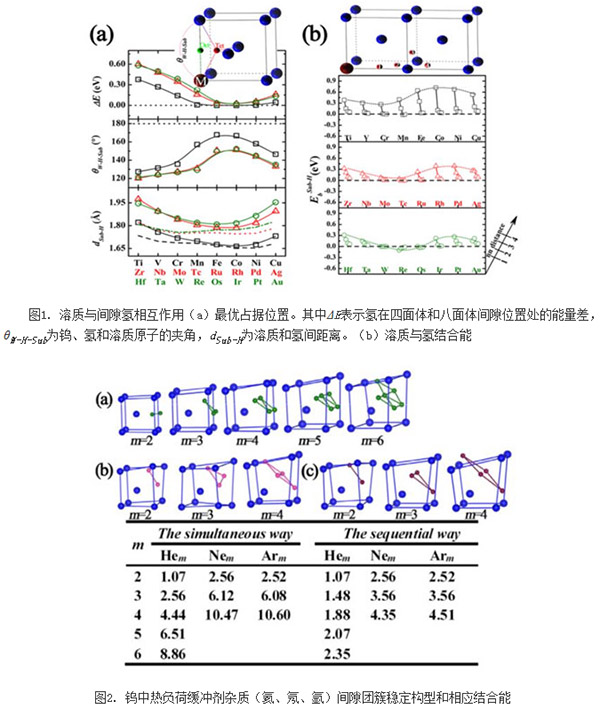Recently, Liu Changsong, researcher of the Institute of Solid State Physics, Institute of Solid State Physics, Chinese Academy of Sciences, collaborated with researchers from the Institute of Plasma Physics and the Institute of Metal Research, Chinese Academy of Sciences, in the theory of hydrogen retention behavior in plasma-oriented tungsten materials. New progress has been made in simulation research. The results of relevant research are published in Nuclear Fusion (Nuclear Fusion 56 (2016) 026004; Nuclear Fusion 56 (2016) 106002). Low hydrogen retention is a requirement for plasma-oriented materials (PFM). Tungsten has become the most promising PFM due to its low hydrogen retention, low physical sputtering rate and high melting point. Severe fusion environments (such as 14MeV neutron irradiation, high-fluence helium and hydrogen isotope plasma bombardment, steady-state and transient high heat loads, and the introduction of various compounds such as dust and mutated elements, heat load buffers, etc. ) will significantly increase the hydrogen retention. Therefore, it is of great significance to realize and understand the hydrogen retention behavior of tungsten in fusion environment and to find ways to effectively inhibit hydrogen retention to achieve controllable thermonuclear fusion. Researchers used quasi-continuous multi-scale methods (first-principles calculations combined with thermodynamic model analysis) to study the influence of the introduction of impurities (mutation elements, heat load buffers) on hydrogen retention in tungsten. The first-principle principle was used to establish a database of impurities and hydrogen interactions (Figs. 1 and 2), including steady-state metastable defect configurations and basic energetics parameters (formation energy, binding energy, etc.) of various impurity-hydrogen defect clusters. The radius of action, etc., provides the basis for higher time and space scale computational simulations (eg, Monte Carlo, rate theory, etc.). Based on the above first-principles data, the influence of impurities such as Re, Os, Ta, and Hf on the dissolution and diffusion behavior of hydrogen was analyzed using a thermodynamic model. The study found that the impurity element can be used as a hydrogen retention point on the one hand, reduce the hydrogen diffusion coefficient, increase the hydrogen retention, on the other hand can reduce the vacancy and the difference between the self-gap diffusion coefficient, improve the compound efficiency of irradiation defects, reduce the density of irradiation defects, This further reduces the amount of hydrogen retained and qualitatively explains the results of hydrogen retention experiments in recent tungsten alloys (Nucl. Fusion 53 (2013) 123021; ​​53 (2013) 013013; 54 (2014) 123013). The thermal buffer impurities Ne and Ar tend to form a stable two-dimensional plate structure along the (110) plane (Figure 2). The physical mechanism is that the interstitial clusters cause the local lattice expansion, forming a low charge density region extending along the (110) plane. With the increase of the number of clustering atoms, the interstitial impurity clusters tend to excite themselves from the gap and mutate into more stable vacancy-impurity gas clusters. The above research work has been supported by the National Magnetic Confinement Nuclear Fusion Energy Development Research Project, the National Natural Science Foundation of China, and the Chinese Academy of Sciences. Aluminum Foil In Oven,Reynolds Aluminum Foil,Heavy Duty Aluminum Foil,Reynolds Wrap Aluminum Foil Henan Everwin Trade Co., Ltd. , https://www.ewaluminium.com